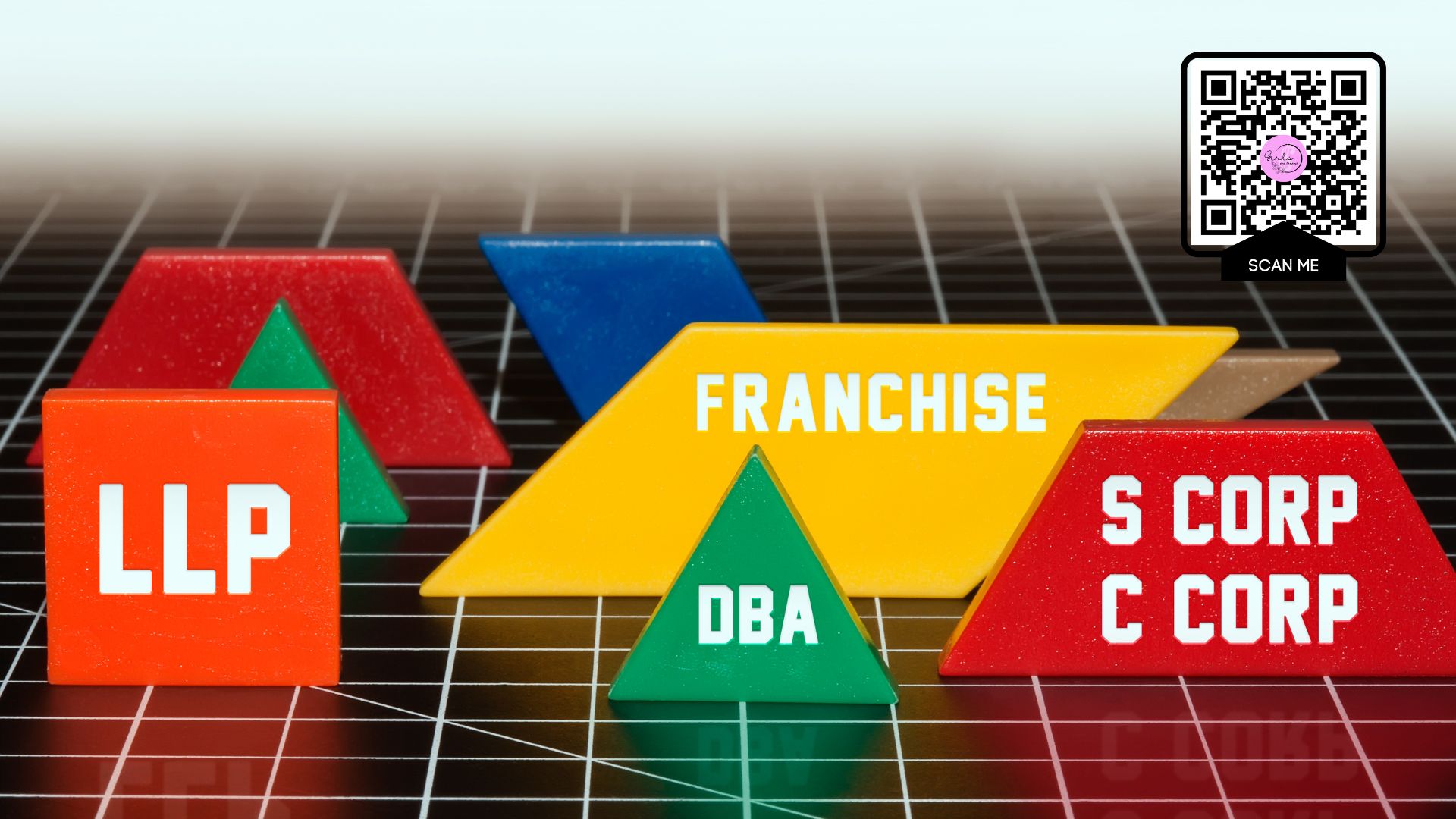
Choosing the Right Path for Success
Starting a business is an exciting and rewarding endeavor that allows entrepreneurs to pursue their passions and create value for their customers and communities. However, before embarking on this journey, it is crucial to consider the most suitable business structure. The business structure you choose will significantly impact your business's legal, financial, and operational aspects. There are three primary types of business structures: sole proprietorship, partnership, and corporation. In this blog, we will delve into each structure, exploring its advantages, disadvantages, and key considerations to help you make an informed decision about the path you want to take for your entrepreneurial aspirations.

Sole Proprietorship
A sole proprietorship is the simplest and most common form of business structure. In this setup, a single individual owns and operates the business, making all the decisions and assuming full responsibility for the company's liabilities. Let's explore the key features of a sole proprietorship:
Advantages:
Easy Setup: Establishing a sole proprietorship is straightforward, involving minimal legal formalities and lower start-up costs.
Full Control: As the sole owner, you have complete control over all business decisions, allowing for quick and agile decision-making.
Tax Simplicity: Income from the business is typically reported on the owner's personal tax return, simplifying tax filing.
Disadvantages:
Unlimited Liability: The owner is personally liable for all the business's debts and legal obligations. This means that personal assets are at risk in case of business-related lawsuits or financial difficulties.
Limited Funding Options: Sole proprietorships may find it challenging to secure funding from external sources due to their perceived higher risk.
Lack of Continuity: The business's continuity is tied to the owner's existence, which could be problematic if the owner becomes incapacitated or passes away.
Key Considerations:
- Sole proprietorships are ideal for small-scale businesses with minimal risks and liabilities.
- Consider obtaining liability insurance to protect personal assets.
- As the business grows, you may consider transitioning to a different business structure to limit personal liability.

2. Partnership
Partnerships involve two or more individuals who come together to jointly operate a business. Like sole proprietorships, partnerships are relatively easy to establish and offer distinct advantages and disadvantages:
Advantages:
Shared Responsibilities and Skills: Partners can bring different skill sets, experiences, and resources to the table, increasing the business's potential for success.
Additional Funding Sources: Partnerships can pool financial resources, making it easier to secure funding from banks or investors.
Tax Flexibility: Unlike corporations, partnerships are generally not subject to double taxation, as profits are passed through to the partners' individual tax returns.
Disadvantages:
Shared Liability: Each partner is personally liable for the partnership's debts and obligations, which can expose personal assets to potential risks.
Disagreements: Disputes and disagreements among partners can arise, potentially causing operational disruptions and legal issues.
Lack of Continuity: Similar to sole proprietorships, the partnership's continuity is influenced by the partners' involvement.
Key Considerations:
- Partnerships should have a clear and comprehensive partnership agreement outlining roles, responsibilities, profit-sharing, dispute-resolution mechanisms, and exit strategies.
- It is essential to choose partners carefully, ensuring shared values and vision for the business.
- Consider a limited liability partnership (LLP) to limit personal liability for certain partners while still enjoying the benefits of a partnership structure.

3. Corporation
A corporation is a legally distinct entity from its owners, known as shareholders. It is formed by filing articles of incorporation with the state and must follow specific legal requirements. There are two main types of corporations: C corporations and S corporations. Let's explore the key aspects of each:
Advantages of C Corporations:
Limited Liability: Shareholders' personal assets are generally protected from the corporation's debts and liabilities.
Access to Capital: Corporations can issue stock to raise capital, making it easier to attract investors and grow the business.
Perpetual Existence: The corporation continues to exist even if shareholders change or pass away, providing stability and continuity.
Disadvantages of C Corporations:
Double Taxation: C corporations are subject to double taxation, meaning profits are taxed at the corporate level, and then dividends are taxed again when distributed to shareholders.
Complex Regulatory Requirements: Corporations are subject to more extensive legal and regulatory obligations, increasing administrative burdens and costs.
Shareholder Disputes: Large corporations may face challenges in aligning the interests of various shareholders and managing disagreements.
Advantages of S Corporations:
Pass-Through Taxation: Similar to partnerships, S corporations enjoy pass-through taxation, where profits and losses are reported on shareholders' individual tax returns.
Limited Liability: Shareholders' personal assets are protected from corporate debts and liabilities.
Tax Savings: S corporations can potentially save on self-employment taxes for certain shareholders.
Disadvantages of S Corporations:
Limited Ownership: S corporations cannot have more than 100 shareholders, and shareholders must be U.S. citizens or residents.
Strict Eligibility Criteria: S corporations have specific eligibility requirements, including restrictions on the types of shareholders and only one class of stock.
IRS Scrutiny: S corporations face a higher risk of IRS scrutiny due to the potential for tax avoidance through compensation arrangements.
Key Considerations:
- The corporation structure is suitable for businesses with high growth potential and significant financial risks.
- Corporate governance is critical; hence, consider appointing a board of directors and having clear bylaws in place.
- Seek professional advice from accountants and legal experts to navigate the complexities of corporate compliance.
